Types of Roses
Rose varieties
There are literally thousands of different varieties and species of roses. First, you need to decide what type you want, and the use it’ll be put to, and then decide on colour and fragrance.
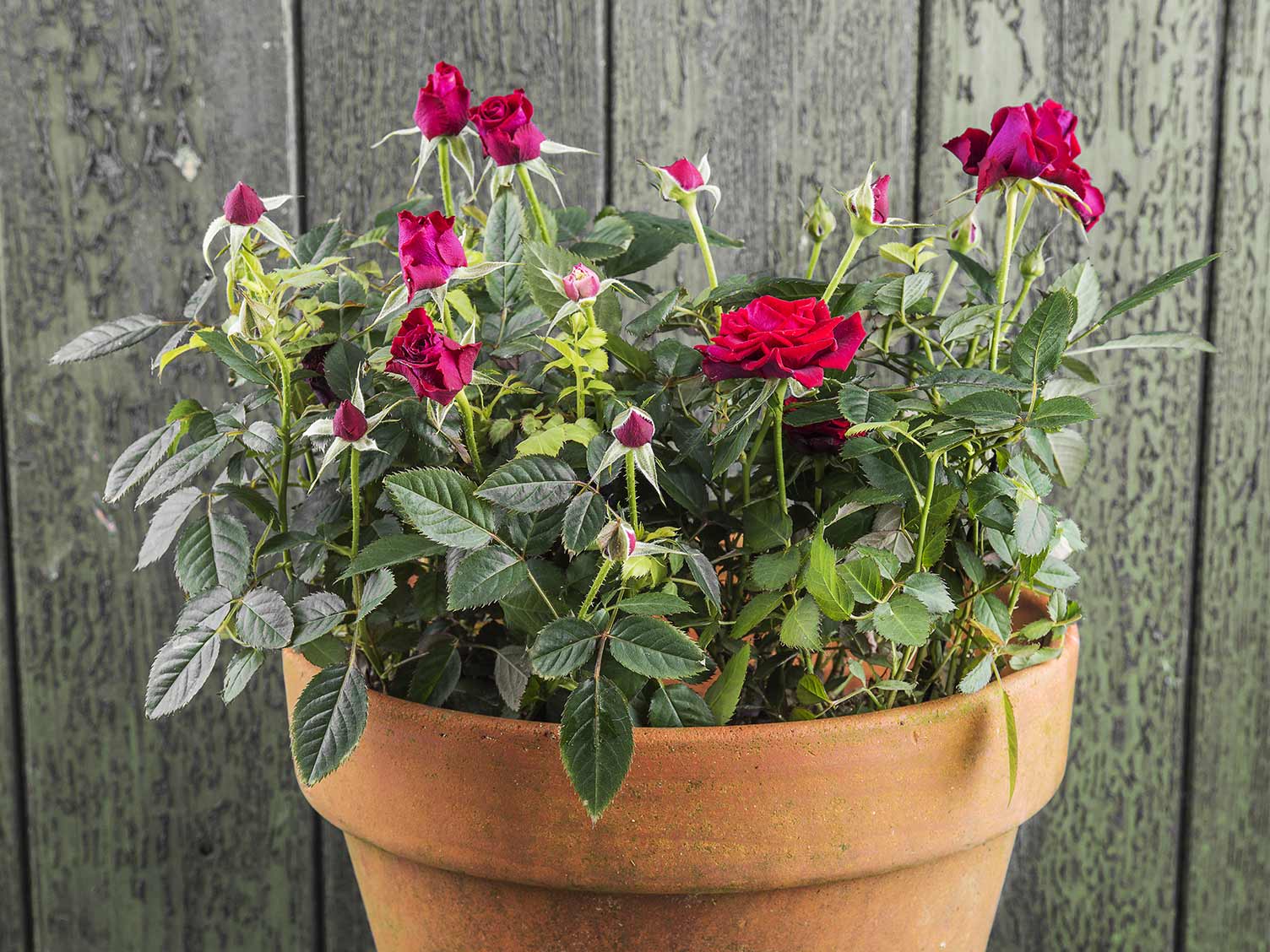
Miniature Roses
Miniature roses have been specifically bred to stay small in size. Miniature, or dwarf roses have smaller flowers than standard rose bushes, but they come in the same variety and colours as their larger counterparts. They can grow anything from 15-60cm (6in-2ft) high and are perfect for the front of the border and small, deep containers.
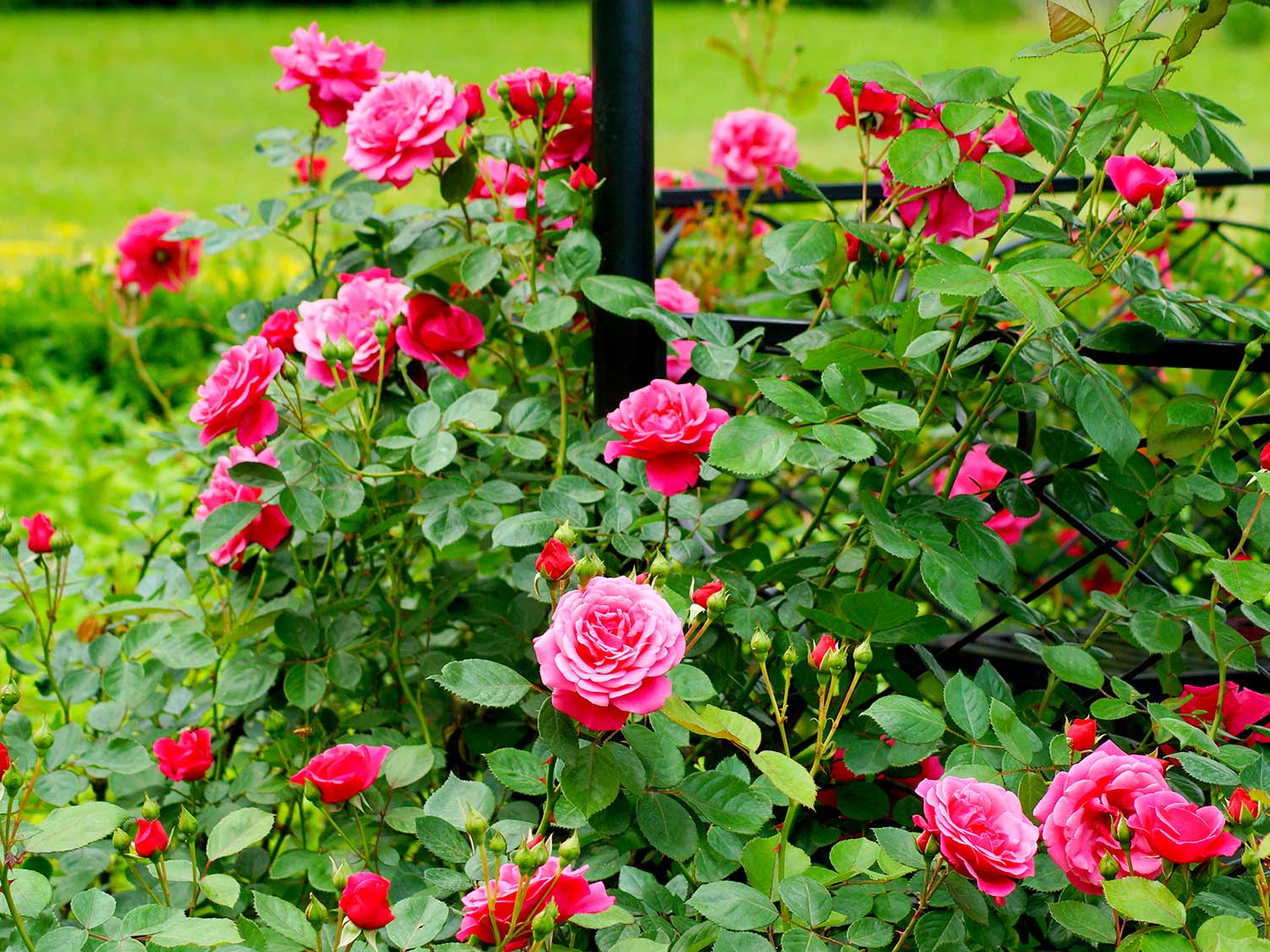
Bush Roses
Bush Roses include hybrid tea (sometimes called large-flowered roses), floribunda (sometimes called cluster roses) and David Austin New English roses. They grow anything from 90cm-1.8ft (3-6ft) high. They are the main choice for borders and large containers.
They can have a wide and spreading form, often with arching thorny branches with blooms along their length. Flowers can be single, semi-double or fully double in a wide range of colours.
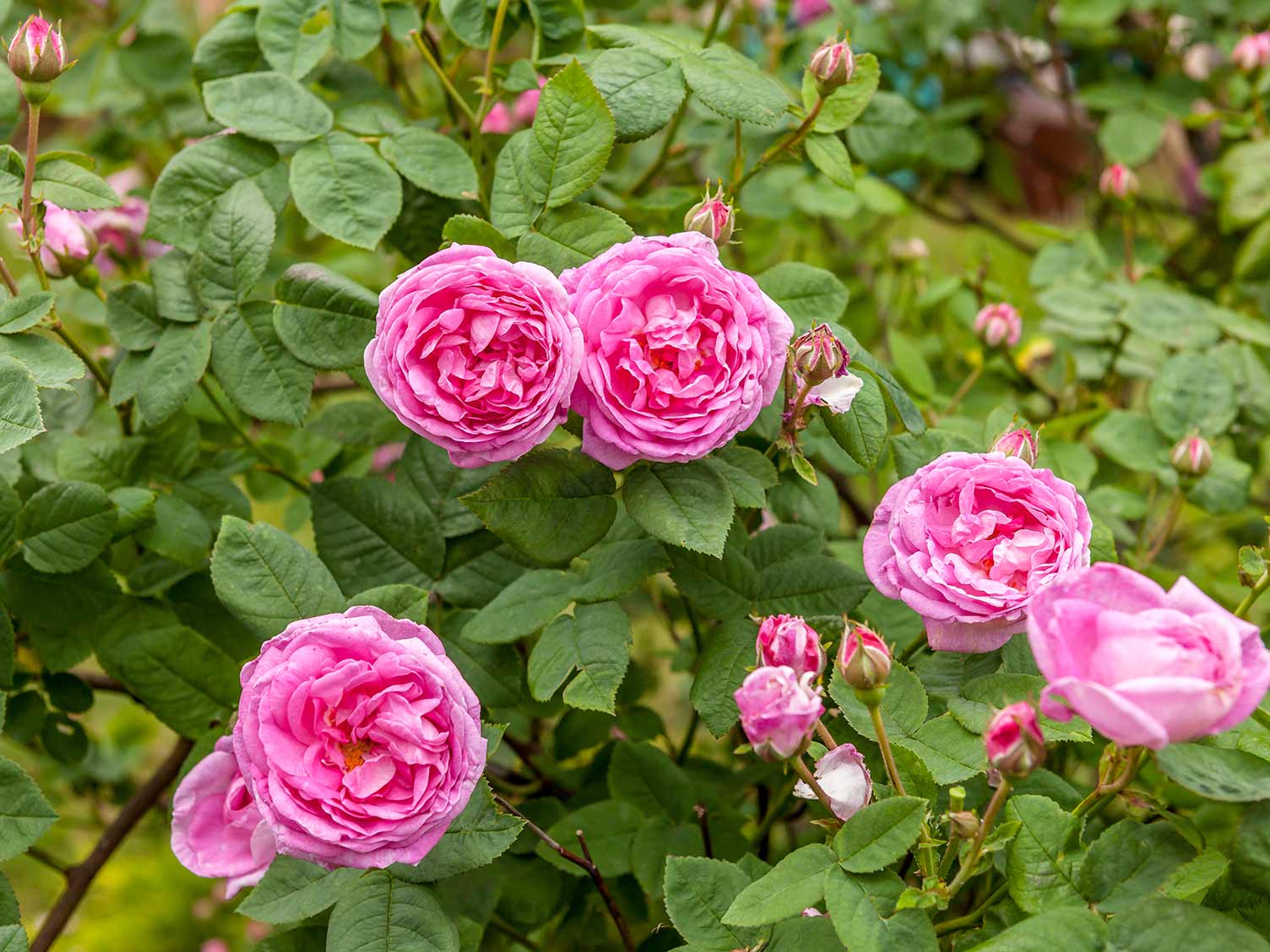
Shrub Roses
This is the term given to a broad group of roses that includes the old-fashioned varieties, such as Bourbons, Centifolias and Albas, and species roses.
Shrub roses are a result of crossing Species Roses and modern Bush Roses and so tend to be tough, reliable and grow to varying heights. Most are quite vigorous and only flower for a short period in summer. Others repeat flowering throughout the summer season, producing masses of blooms in clusters, not unlike Floribunda roses. Shrub roses are ideal for hedging as many varieties have a bushy habit
Shrubs can be dwarf in height or grow anything up 1.5 metres however some varieties grow to only around 50cm in height.
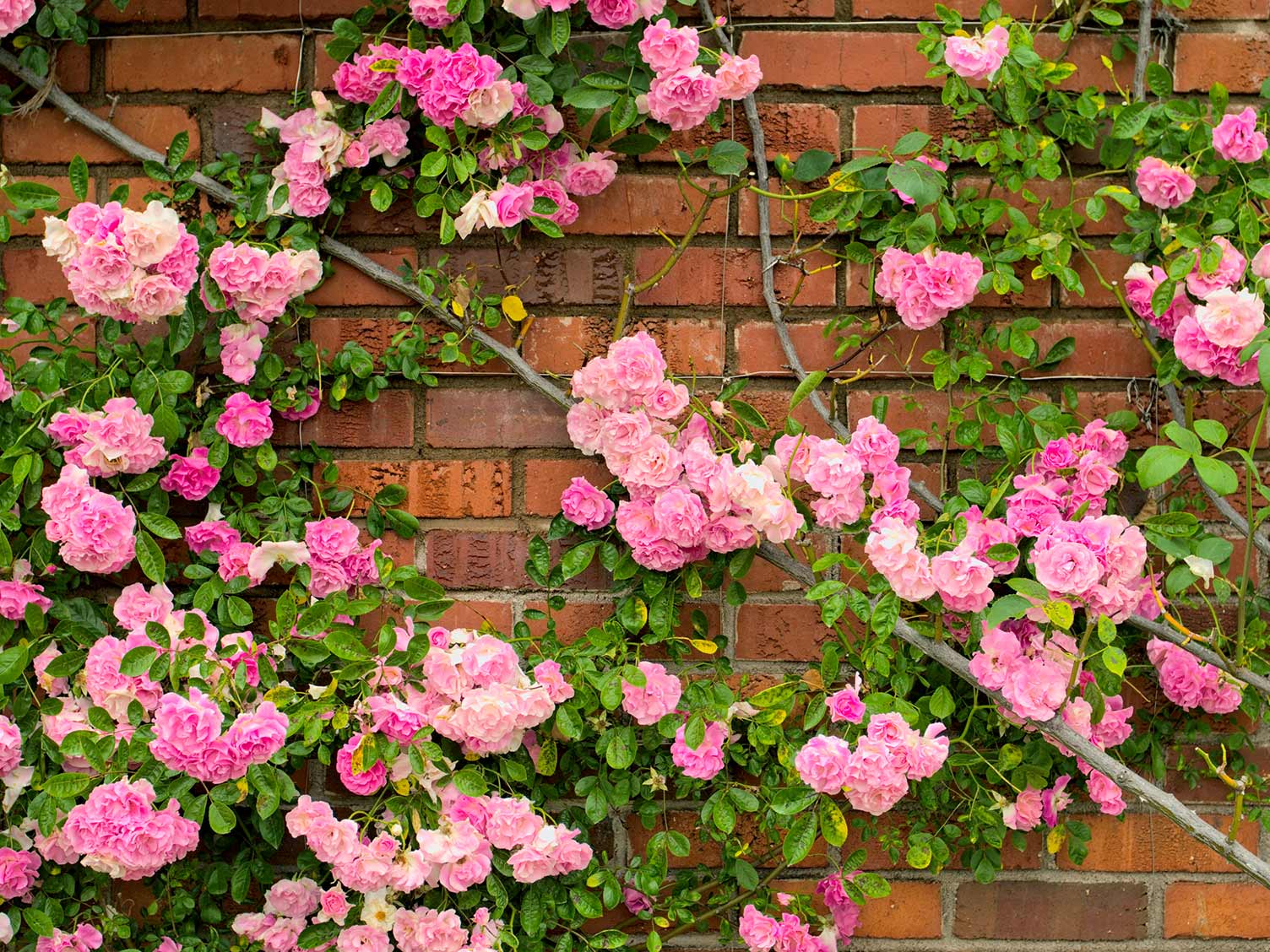
Climbers and Ramblers
The main differences between the climbers and ramblers are that ramblers are more vigorous than climbers and only really suitable to cover large areas, they tend to only flower once in summer and usually produce clusters of smaller flowers. Climbers are less vigorous, more compact, produce larger flowers and usually flower all summer long.
Climbing Roses
Climbing Roses have a natural ability to flower from the top of the rose almost to the ground. Climbing roses are an excellent way of bringing height to the garden as they can be trained to grow up walls, pillars, obelisks, trellises, fences and over arches. Climbing Roses usually have large flowers, and can continue to flower through the summer; simply dead-head to encourage new growth.
Climbing roses can grow to a height of approximately 2-4 metres.
Patio Climbing Roses
Patio Climbing roses are very similar to climbing roses but are usually more compact in size and less vigorous in growth. They can grow to a height of approximately 2-3 metres.
Rambling Roses
Rambling roses are related to Climbing roses but unlike Climbing roses which can repeat flower throughout the summer season, Rambling roses usually bloom only once. That said, when a Rambling rose blooms, it is a sight to behold. Rambling roses grow upwards and outwards, often covering large expanses of walls, stone work and can be trained to grow through trees so as soon as the rose blooms, that whole area becomes vibrant with colour.
Rambling roses can grow to heights of approximately of 6 to 8 metres although lower growing varieties are available.
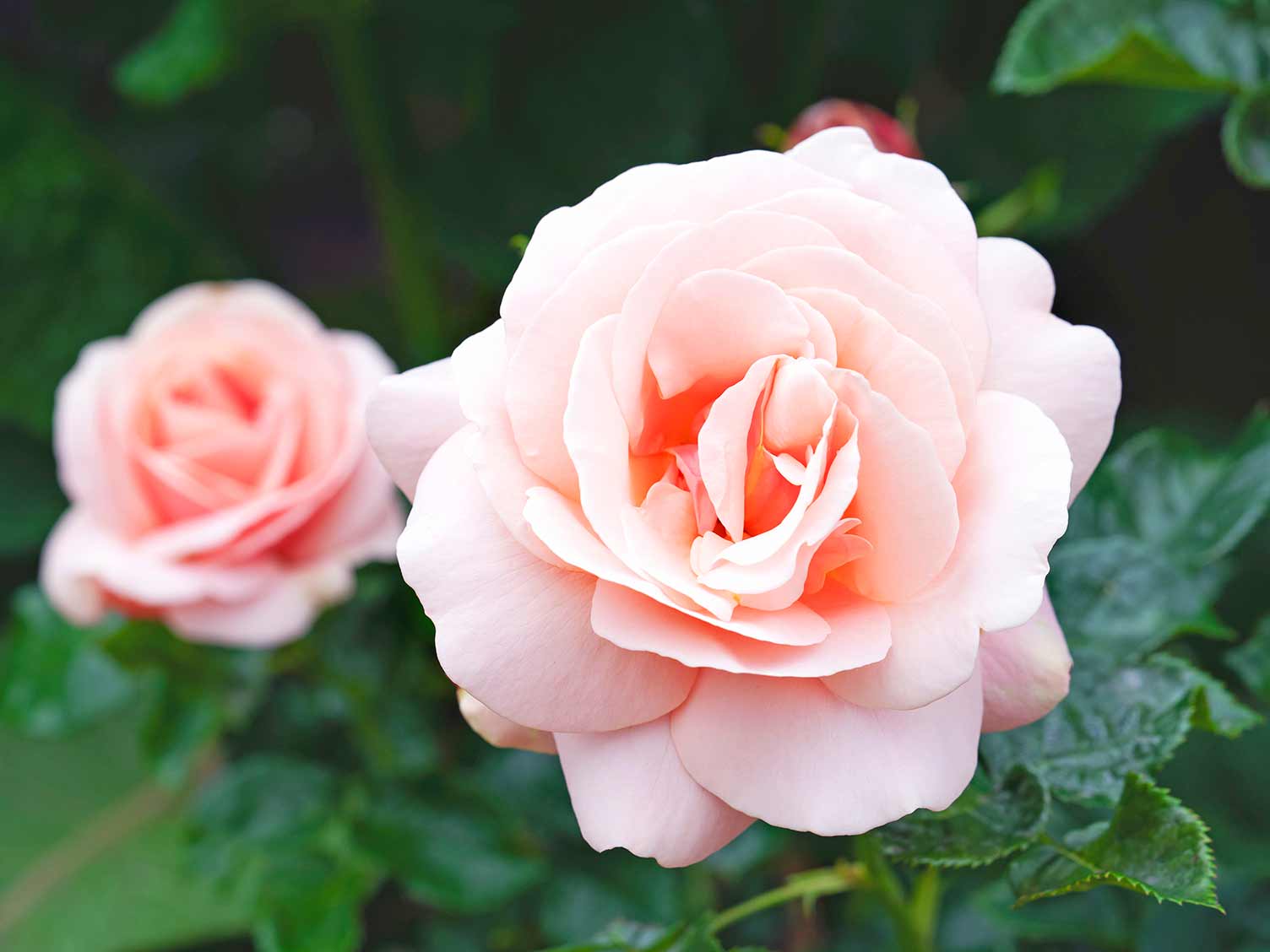
Standard Roses
Standard Roses are, also known as Stem Roses are grafted* onto a single stem which is usually about 1 metre in height. The rose grafted on can either be a bush rose or a climbing or rambling rose (weeping standard) variety. The flower head then grows on top, to give a “lollipop” effect. Standard roses make ideal statement plants for any garden or outdoor space especially when planted in pairs to decorate an entrance way or in 3’s in the ground. They come in a range of heights, including quarter, half and full standards or otherwise known as as single flowering, small flowering, and large flowering roses.
Standard roses usually grow to a height of approximately 1 metre to the top of the stem, with the flower head on top, to give a lollipop shape.
*Grafting, or budding, is a technique for propagating plants wherein you take a piece from one plant and fuse it onto another.
Half Standard Roses
Half Standard Roses are grafted* onto a single stem which is usually about 75cm in height. The flower head then grows on top, to give a “lollipop” effect. Half Standard roses make ideal statement plants for any garden or outdoor space especially when planted in pairs to decorate an entrance way or in 3’s in the ground.
Half Standard roses come in different heights as single flowering, small flowering, and large flowering roses.
Half Standard roses usually grow to a height of approximately 75cm to the top of the stem, with the flower head on top, to give a lollipop shape.
*Grafting, or budding, is a technique for propagating plants wherein you take a piece from one plant and fuse it onto another.
Patio Standard Roses
Patio Standard roses are smaller and more compact than Half Standard and Standard roses but as with Standard and Half Standard roses, Patio Standard roses are grafted onto a stem. This gives the rose more height and so are perfect for providing a focal point in the garden or for planting in pots and containers. Patio Standard roses produce many, small blooms which continue to flower throughout the summer months.
Patio Standard roses usually grow to a height of approximately 50cm to the top of the stem with the flower head on top to give a lollipop shape.
These dwarf roses grow anything from 15-60cm (6in-2ft) high. They are perfect for the front of the border and small, deep containers.
This includes hybrid tea (sometimes called large-flowered roses), floribunda (sometimes called cluster roses) and David Austin New English roses. They grow anything from 90cm-1.8ft (3-6ft) high. They are the main choice for borders and large containers.
